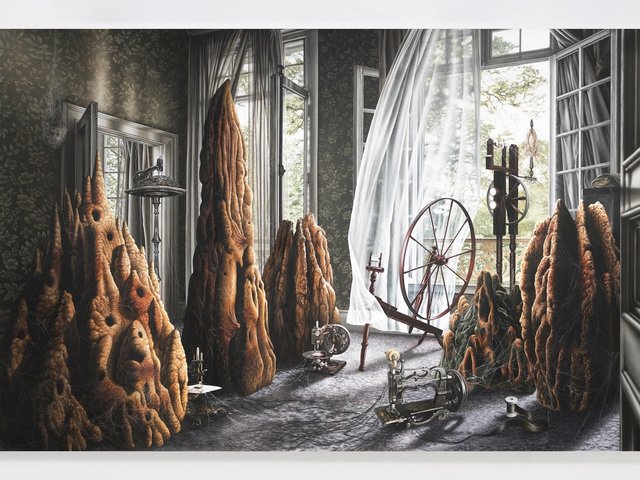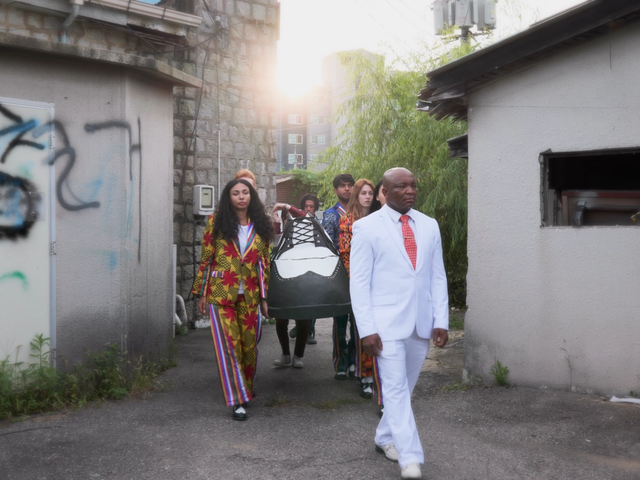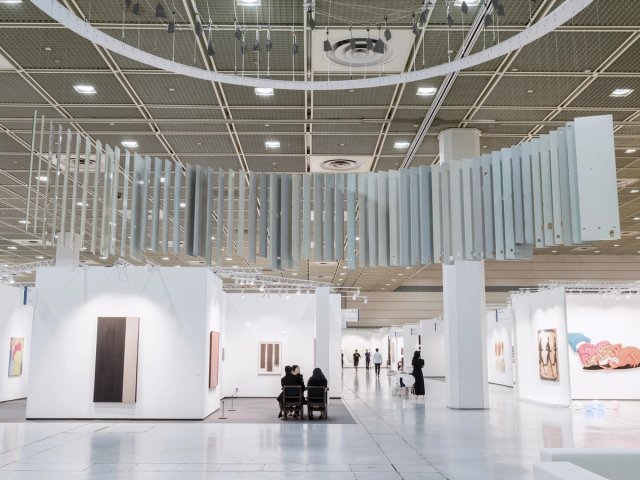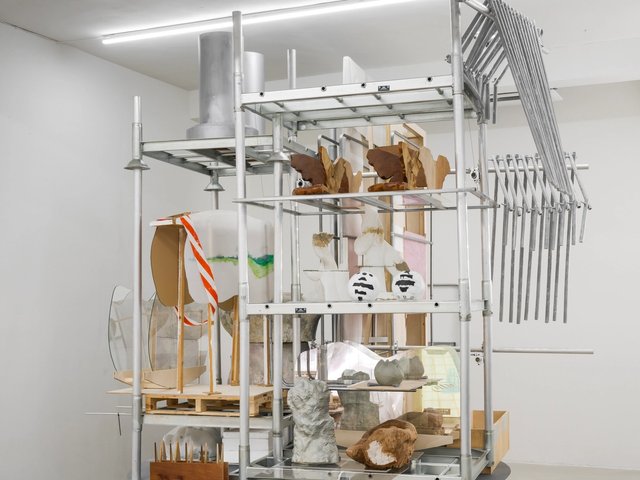A selection of Korea's most exciting contemporary artists have been selected for this year's Korean Artists Today, a long-term project which will see a cohort of artists chosen each year for their potential to make it on the global stage. See the full list here.
IkkibawiKrrr is a visual research band founded in 2021 by Gyeol Ko, Jungwon Kim and Jieun Cho. The name comes from a combination of “ikki”, the Korean word for moss, “bawi”, meaning rock, and “Krrr”, an onomatopoeic term for a rolling motion. “We recalled words that we liked, and moss-covered rocks are often found in places we feel drawn to,” they explain, adding that the way moss survives and adapts to its environment was also an inspiration. “Moss is known to slowly respond to its surroundings along narrow boundaries, subtly transforming the air and soil. We hope our practice and work can also carry such quiet, gradual strength.”
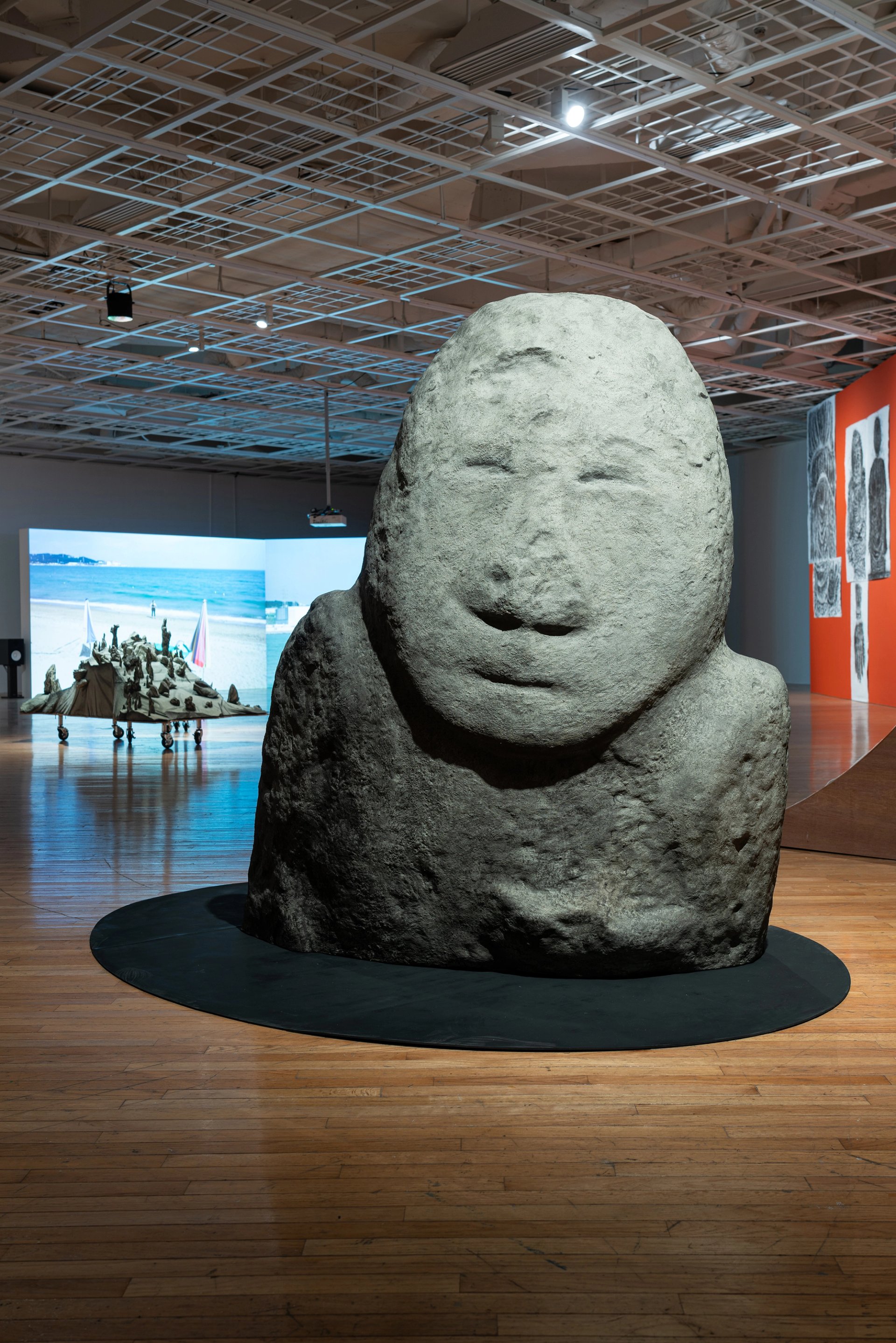
Rocks Living in Rewind (2024)
Courtesy of the artists; © ikkibawikrrr
Calling themselves a “band” rather than a collective reflects how ikkibawiKrrr work across a wide range of sites, media and communities to explore the connection between plants, natural phenomena, humanity and ecology. These multi-stranded explorations can result in video, sculpture, drawing, photography and sound works as well as events, performances and workshops. But underpinning all of ikkibawiKrrr’s activities is a concept of community that encompasses the natural environment, past histories, biological species, religion, myth and folklore. Fieldwork is crucial to all their projects. “We spend a lot of time visiting sites and being with people,” they say. “For us, this process goes beyond research or preparation—it’s an essential part of the work itself. Unexpected conversations and relationships that arise in the field often lead to stories and connections we could not have imagined beforehand.”
We spend a lot of time visiting sites and being with people. This process goes beyond research ... it’s an essential part of the work itself
Their first project, Herrings (2020), began at the request of the people of Gangneung who were protesting a thermoelectric power plant in their city, and resulted in a performance on the beach by the power station featuring singing and dancing community members wearing fish-shaped masks they had made during preparatory workshops.
To make the performance Diving Is with Companions (2021)—a collaboration between the Jeju Dance Art Center, the Hado Haeneyo Choir and the Hado Fishing Village Cooperative—and the film and sculptural installation Seaweed Story (2022), ikkibawiKrrr spent nearly two years on Jeju Island working with elderly haenyeo women divers and local residents to celebrate the symbiotic nature of the divers’ relationship with the natural world. “We wanted to show to the world the time haenyeos spend beneath and under the rare Jeju rocks. The sea women breathe deep and long to dive into the waters and their breath can be felt in their songs too,” ikkibawiKrrr say, adding that the women’s songs “wash away the pain and scars of the island”.
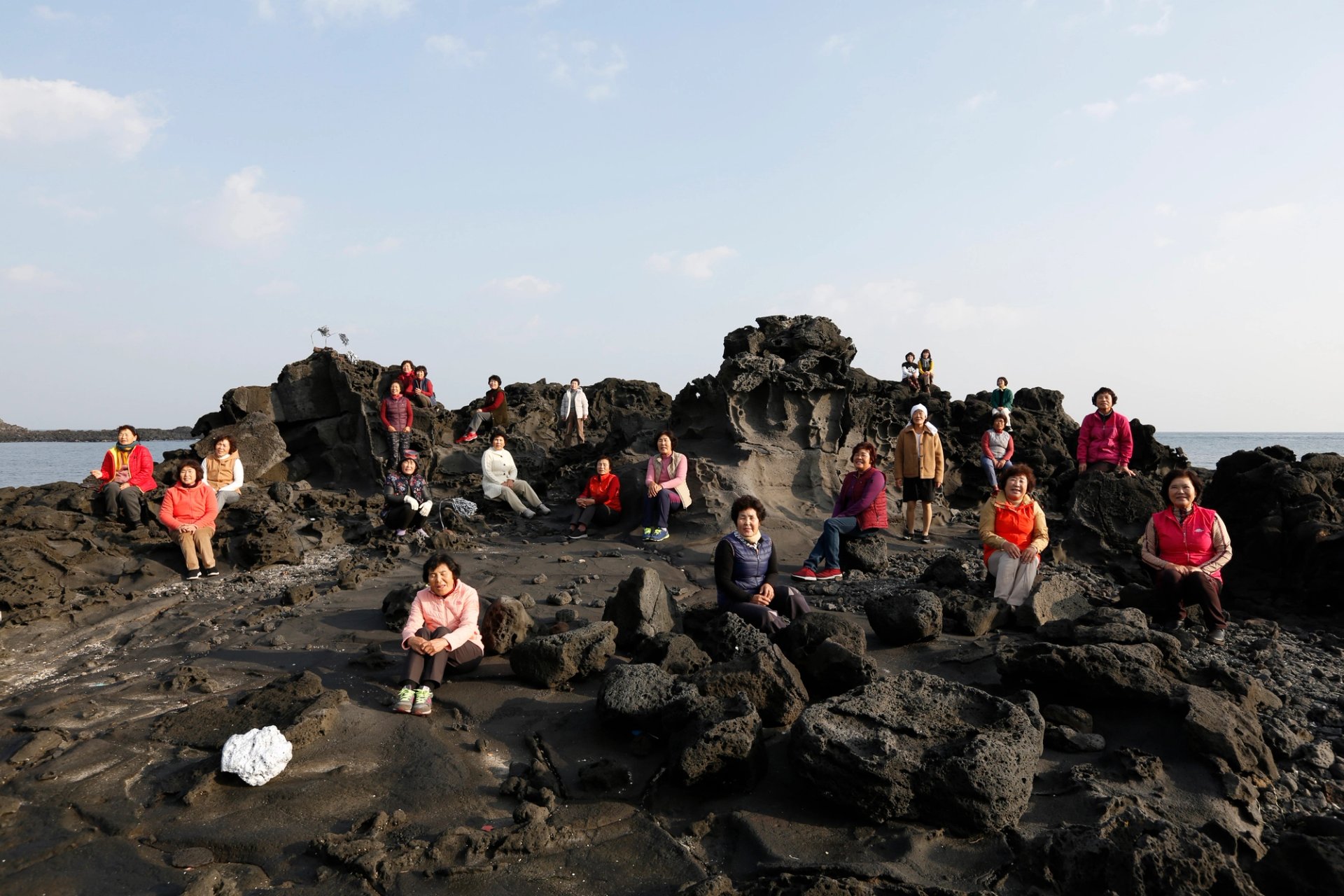
Seaweed Story (2022)
Courtesy of the artists; © ikkibawikrrr
The adaptability of nature and the resilience of communities are key themes. In the film and photographs of Tropical Story (2022), they examine remnants of the Pacific war and Japanese colonialism in the islands of Micronesia, Indonesia and Jeju, most notably locating long-forgotten airstrips, military bases and landing pads built by forced indigenous and migrant labour and now overgrown with jungle vegetation. “On a macro level, the project explores the landscapes marked by war and the ecological conditions that carry its scars,” the artists say. “On a micro level, we looked into the lives of forced labourers who once lived in tropical areas—many of whom disappeared without leaving behind any trace.”
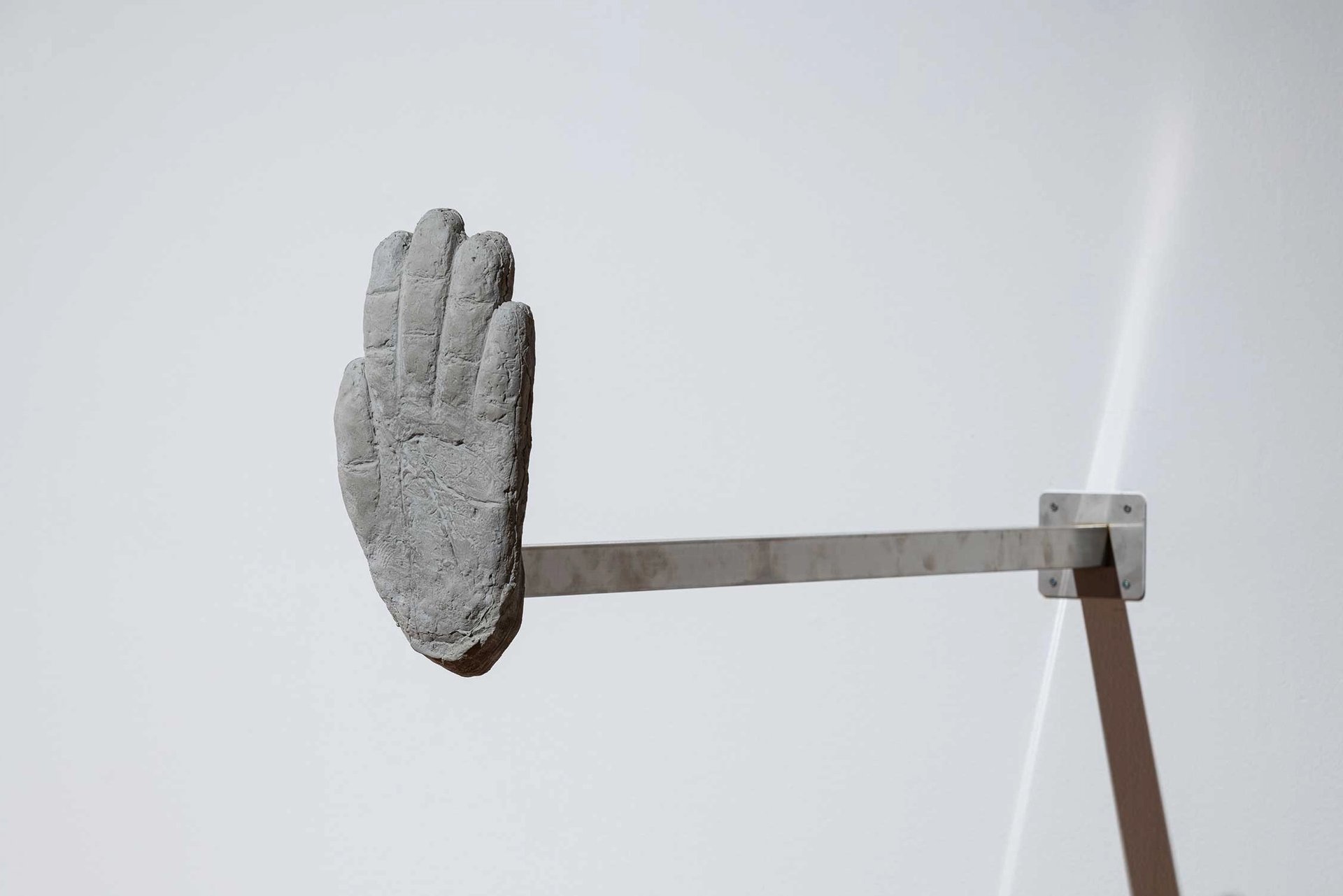
Buddha High Five (2024)
Courtesy of the artists ©ikkibawikrrr
They are currently preparing for exhibitions at the Aichi Triennale in Japan, the Aranya Art Centre in China and the Asia Culture Centre in Gwangju, but even within this more international context they are keeping firmly rooted in the local by working closely with a designated village near each of the three sites, stating that “by constantly shifting our perspective between the distant and the close we begin to better understand the reality we live in”.




